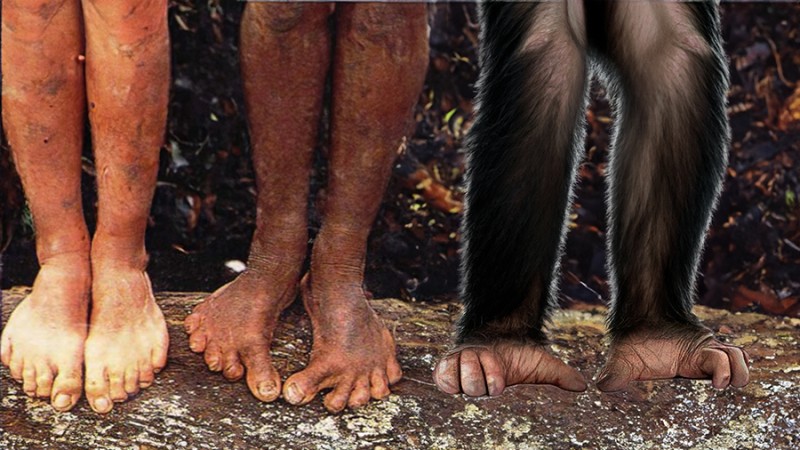Echoes of Evolution: Ancient Traits, Modern Transformations

"The story of life on Earth is one of constant transformation." – Richard Dawkins
Throughout human history, our bodies have carried whispers of the past—some obvious, others hidden deep within our DNA. From the ancient abilities of our primate ancestors to newly emerging traits in indigenous populations, evolution is not a closed chapter. It is still being written—sometimes through reawakened features long thought lost, and sometimes through novel adaptations that echo what came before.
When the Past Reappears: The Phenomenon of Atavisms
Imagine being born with a fully functional set of prehensile feet—feet that can grip like hands. Though rare, this is a real atavism: a genetic throwback to our primate ancestors who used all four limbs to navigate trees. Similarly, some infants are born with vestigial tails—remnants from a time when our ancestors relied on them for balance in arboreal environments. These evolutionary echoes remind us that the traits of the past never truly vanish—they lie dormant, coded into our DNA, awaiting the right (or wrong) switch to flick them back on.
Even more subtly, supernumerary nipples—extra nipples along the chest and torso—appear along the so-called “milk lines.” This feature harks back over 100 million years, to when early mammals birthed large litters and required numerous teats to nurse them all.
These biological relics are not exclusive to humans. Animals show similar adaptations. Horses, for instance, evolved from multi-toed ancestors. Most modern horses have a single hoof, but occasionally, one is born with extra toes—a nod to the past, layered over the adaptations of today. Snakes have occasionally been born with small limbs—traces of their lizard ancestry—while whales, once land-dwelling mammals, have been known to exhibit hind legs during development.
When the Present Reinvents the Past: Adaptive Innovation
But evolution isn’t just about echoes. It’s also about improvisation. In remote indigenous communities, children and adults alike have developed an incredible ability to climb trees with their feet. Their toes are remarkably flexible, and their foot muscles have adapted to function much like those of our arboreal ancestors. This isn’t atavism—this is innovation. These feet didn’t revert to an ancestral form; they adapted anew to fulfill a familiar need: moving through a vertical world.
Evolution: A Fractal Story
What ties these phenomena together is the fractal nature of evolution. Patterns repeat—sometimes exactly, sometimes with variation. An old trait resurfaces. A new solution mimics an old one. It’s not linear, and it’s not random—it’s recursive. Each loop of adaptation and re-adaptation creates new forms, while still echoing those that came before.
Atavisms and adaptations are not opposites. They are two sides of the same evolutionary process—our past and future encoded in the same spiral of DNA.
So the next time you marvel at someone climbing a tree barefoot, or read about a baby born with a tail, remember: evolution is not over. It is alive in every footstep, every echo, and every leap forward.


Leave a comment